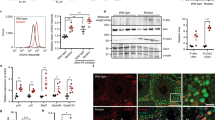Abstract.
In this article we review our current knowledge of the mechanisms by which point mutations arise in the mitochondrial DNA (mtDNA) of Saccharomyces cerevisiae and discuss to what extent these mechanisms operate in human mtDNA mutagenesis. The 3′–5′ exonuclease proofreading activity of Pol γ ensures accuracy of mtDNA replication in both yeast and humans, while the role of base excision repair in mtDNA error avoidance remains debated. The mitochondrial mismatch repair Msh1 protein, which removes transitions in yeast, is absent in humans, a particularity that might cause accumulation of transitions, while the most frequent substitution in yeast mtDNA is A:T to T:A transversion. Proofreading-deficient mutator human cell lines and knockin mice have been created. They will be useful for studying the mechanisms by which mtDNA mutations accumulate in diseases, ageing, malignancy and drug therapy.
Similar content being viewed by others
Author information
Authors and Affiliations
Corresponding author
Additional information
Received 25 May 2004; received after revision 21 June 2004; accepted 7 July 2004
Rights and permissions
About this article
Cite this article
Foury, F., Hu, J. & Vanderstraeten, S. Mitochondrial DNA mutators. CMLS, Cell. Mol. Life Sci. 61, 2799–2811 (2004). https://doi.org/10.1007/s00018-004-4220-y
Issue Date:
DOI: https://doi.org/10.1007/s00018-004-4220-y




